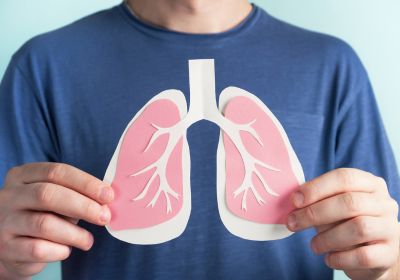This article delves into the multifaceted aspects of pneumonia outbreaks, exploring their causes, symptoms, prevention, and treatment. By comprehending the complexities of pneumonia, we can collectively work towards reducing its prevalence and mitigating its devastating effects on public health.
Contents
Global Impact of Pneumonia
Pneumonia, a formidable health concern, silently claims lives across the globe, making it imperative to comprehend the intricacies of its outbreaks. This respiratory infection, characterized by inflammation of the lungs, affects individuals of all ages, but its impact is particularly severe among the very young, the elderly, and individuals with weakened immune systems. Pneumonia outbreaks, whether caused by bacteria, viruses, or fungi, can swiftly spread and result in significant morbidity and mortality.
The global impact of pneumonia is staggering, with millions of cases reported annually. It places a substantial burden on healthcare systems and communities, both in terms of healthcare costs and the emotional toll on affected individuals and their families. Understanding the factors that contribute to pneumonia outbreaks is crucial in developing effective prevention and intervention strategies.
Causes and Contributing Factors of Pneumonia Outbreaks
Pneumonia outbreaks stem from a multitude of causes, encompassing a range of infectious agents and external factors that play pivotal roles in their occurrence. Understanding these causative factors is paramount in effectively addressing and preventing outbreaks.
- Infectious Agents; Pneumonia outbreaks are frequently triggered by a variety of infectious agents. Bacterial pneumonia is commonly caused by Streptococcus pneumoniae, while viral pneumonia can be attributed to viruses such as influenza and the notorious SARS-CoV-2, responsible for the COVID-19 pandemic. Fungal pneumonia also contributes to outbreaks, albeit less frequently.
- Environmental Factors; Environmental conditions play a substantial role in pneumonia outbreaks. Factors like air pollution, crowded living conditions, and exposure to indoor allergens can increase susceptibility to respiratory infections. Inadequate ventilation and poor indoor air quality can create favorable environments for pathogens to thrive and spread.
- Lifestyle and Behavior; Lifestyle choices and behaviors can influence the risk of pneumonia outbreaks. Smoking, for example, weakens the respiratory system’s defenses, making individuals more susceptible to infections. Additionally, suboptimal hygiene practices, such as improper handwashing and lack of vaccination, can contribute to the transmission of pneumonia-causing agents within communities.
- Healthcare Settings; Pneumonia outbreaks can also occur within healthcare facilities, especially among vulnerable patients. Hospital-acquired pneumonia is a concerning issue, often linked to invasive medical procedures and antibiotic-resistant bacteria.
Understanding the interplay between these various factors is essential in mitigating the impact of pneumonia outbreaks. Effective prevention strategies must address both infectious agents and the environmental and behavioral determinants that facilitate their transmission.
Symptoms of Pneumonia
Pneumonia presents a range of common symptoms, the nature and severity of which can vary depending on the causative agent. Regardless of the specific pathogen involved, fever is a hallmark symptom of pneumonia, indicating an inflammatory response within the lungs. A persistent cough is another prevalent feature, with variations in its characteristics. The cough can be dry and hacking or produce yellow or green sputum, a distinction often linked to the type of pneumonia. Shortness of breath, which can range from mild to severe, is a prevalent symptom, particularly when lung function is compromised.
Additionally, individuals with pneumonia frequently experience chest pain, typically sharp or stabbing, due to inflammation of lung tissue. Fatigue is a common companion, as the body expends energy to combat the infection, and chills and excessive sweating may occur alongside fever. While these symptoms generally apply to all pneumonia cases, the specific presentation can differ based on whether the pneumonia is bacterial, viral, fungal, or related to aspiration, necessitating prompt medical evaluation for accurate diagnosis and appropriate treatment.
Prevention Strategies
Preventing pneumonia requires a multi-faceted approach, encompassing vaccination, lifestyle adjustments, and stringent hygiene practices. Vaccination stands as a pivotal preventive measure, particularly for specific types of pneumonia. Vaccines like the pneumococcal and influenza vaccines offer protection against bacterial and viral pneumonia, respectively. These vaccines are especially vital for vulnerable populations, such as young children, the elderly, and individuals with weakened immune systems, as they significantly reduce the risk of infection and its potential complications.
Lifestyle changes and hygiene practices play a crucial role in minimizing pneumonia risk. Smoking cessation is paramount, as smoking weakens the respiratory system’s defenses, making individuals more susceptible to infections. Maintaining overall good health through a balanced diet and regular exercise supports a robust immune system. Adequate rest and sleep also contribute to immune function.
Practicing proper hand hygiene, including frequent handwashing with soap and water, can prevent the transmission of pneumonia-causing pathogens. Avoiding close contact with individuals who have respiratory infections and covering one’s mouth and nose when coughing or sneezing are essential measures in reducing disease spread.
Pneumonia Treatment
Pneumonia treatment options vary depending on the causative agent. Bacterial pneumonia is typically treated with antibiotics, which target the specific bacteria responsible. Viral pneumonia, on the other hand, often does not require antiviral medications, as the body’s immune system can combat the virus. However, in severe cases or with specific viruses like influenza, antiviral drugs may be prescribed.
Fungal pneumonia is less common but may necessitate antifungal medications for effective treatment. Supportive care, including oxygen therapy and hydration, is essential for all pneumonia cases to alleviate symptoms and aid in recovery. Prompt medical attention is crucial for proper diagnosis and tailored treatment.
Community Vigilance and Preventive Measures
Community vigilance plays a pivotal role in recognizing and responding to pneumonia outbreaks. Communities should remain vigilant by educating their members about the common symptoms of pneumonia, encouraging early medical consultation, and promoting vaccination, particularly among high-risk individuals. Public health strategies include robust surveillance systems to detect outbreaks swiftly, facilitating timely intervention.
Community engagement in outbreak prevention involves promoting good hygiene practices, such as regular handwashing and respiratory etiquette, and creating awareness about the importance of vaccination. By fostering a proactive approach to pneumonia awareness and prevention at the community level, we can collectively reduce the impact of outbreaks and protect public health.
Conclusion
Pneumonia, a global health concern, necessitates a comprehensive understanding to combat its impact effectively. Recognizing the diverse causative agents and their varied symptoms is crucial. Prevention, through vaccination and lifestyle changes, remains paramount, while tailored treatments for bacterial, viral, or fungal pneumonia are essential. Community vigilance and public health strategies enhance outbreak management. By collectively embracing these measures, we can reduce the burden of pneumonia outbreaks and safeguard public health, underlining the importance of continued awareness and proactive prevention efforts.








